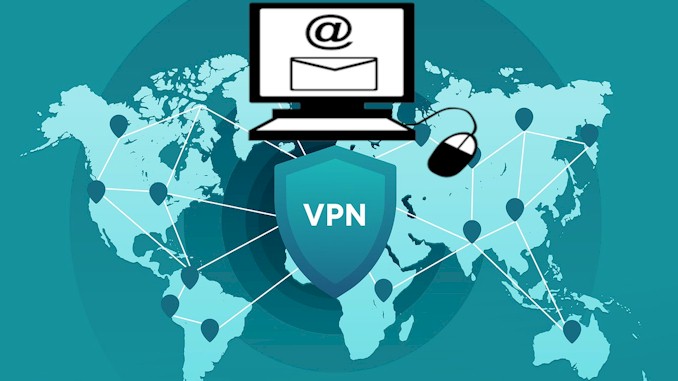The Ultimate Guide to OpenVPN Connect Setup
If you are looking for a secure and easy way to access the internet privately, you might be interested in setting up OpenVPN Connect on your device. OpenVPN Connect is a free and open-source software that allows you to create a virtual private network (VPN) between your device and a remote server. With OpenVPN Connect, you can encrypt your internet traffic, bypass censorship and geo-restrictions, and protect your online privacy and security. In this blog post, I will show you how to setup OpenVPN Connect on Windows, Mac, Linux, Android, and iOS devices. I have been using OpenVPN Connect for years and I can assure you that it is one of the best VPN solutions available. Follow me as I guide you through the steps to setup OpenVPN Connect in no time.
To setup OpenVPN Connect, you need to download and install the OpenVPN Connect app on your device and obtain a configuration file from your VPN provider or create your own. Then, you need to import the configuration file into the app and connect to the VPN server. Once connected, you can enjoy a secure and private internet connection.
Now that you know how to setup OpenVPN Connect, you might be wondering how to use it effectively and efficiently. In the following paragraphs, I will share with you some tips and tricks on how to customize your VPN settings, troubleshoot common issues, and optimize your VPN performance. You will also learn how to use OpenVPN Connect with other applications and services that can enhance your online experience. So, don’t stop reading and discover how to make the most out of OpenVPN Connect.
What is OpenVPN Connect and why use it?
OpenVPN Connect is the official VPN (Virtual Private Network) client developed by OpenVPN Technologies. It is available for various platforms, including Windows, Mac, Linux, Android, and iOS.
VPN Connect is a free and open-source software that allows you to create a virtual private network (VPN) between your device and a remote server.
A VPN is a technology that encrypts your internet traffic and routes it through a server in another location, making it appear as if you are browsing from that location. This way, you can access websites and services that are otherwise blocked or restricted in your region, as well as protect your online privacy and security from hackers, ISPs, and government surveillance.
There are many reasons why you might want to use OpenVPN Connect. Some of them are:
- OpenVPN Connect is compatible with any VPN service that supports the OpenVPN protocol. The OpenVPN protocol is one of the most widely used and trusted VPN protocols in the industry, offering high performance, security, and flexibility. You can use OpenVPN Connect with your own VPN server or with any of the hundreds of VPN providers that offer OpenVPN as an option.
- OpenVPN Connect is available for multiple platforms and devices. You can download and install OpenVPN Connect on Windows, Mac, Linux, Android, and iOS devices, as well as routers and other devices that support OpenVPN firmware. This means you can use OpenVPN Connect to secure your internet connection on your laptop, smartphone, tablet, smart TV, gaming console, and more.
- OpenVPN Connect is easy to use and configure. You can easily import a configuration file (a file with an .ovpn extension) that contains all the necessary information for connecting to a VPN server using OpenVPN Connect1. You can obtain a configuration file from your VPN provider or create your own if you have access to a VPN server. Once you import the configuration file into the app, you can connect to the VPN server with just one click.
- OpenVPN Connect supports advanced features and customization. You can adjust various settings in OpenVPN Connect to optimize your VPN experience, such as choosing the encryption cipher, compression algorithm, connection timeout, proxy settings, DNS servers, and more. You can also use OpenVPN Connect with other applications and services that can enhance your online experience, such as 2FA (two-factor authentication), SAML (Security Assertion Markup Language), CloudConnexa™ Cyber Shield (a feature that protects you from cyber threats without requiring you to tunnel internet traffic), and more.
How to download and install OpenVPN Connect on your device
Before you can use OpenVPN Connect, you need to download and install the OpenVPN Connect app on your device. The app is available for Windows, Mac, Linux, Android, and iOS devices, as well as routers and other devices that support OpenVPN firmware1. The installation process may vary depending on your device and operating system, but here are some general steps to follow:
How to setup OpenVPN on Windows
You can download the OpenVPN Connect client software from the OpenVPN website or from your VPN provider’s website. You can also download it from the OpenVPN Access Server client web interface if you have access to it. Once you download the installer file, double-click on it and follow the on-screen instructions to complete the installation.
To set up OpenVPN on Windows, follow these steps:
- Download the OpenVPN software: Visit the official OpenVPN website (https://openvpn.net/community-downloads/) and download the OpenVPN Windows installer. Choose the appropriate version based on your system architecture (32-bit or 64-bit).
- Install OpenVPN: Run the installer you downloaded and follow the on-screen instructions to install OpenVPN on your Windows machine. Make sure to allow any necessary permissions during the installation process.
- Obtain OpenVPN configuration files: You will need configuration files to connect to your OpenVPN server. These files are typically provided by your VPN service provider or can be generated if you are setting up your own OpenVPN server. Download the configuration files and save them to a known location on your computer.
- Launch OpenVPN GUI: Once the installation is complete, open the Start menu and search for “OpenVPN GUI.” Click on the OpenVPN GUI shortcut to launch the OpenVPN client.
- Copy configuration files: Locate the OpenVPN GUI icon in the system tray (near the clock). Right-click on the icon and select “Settings.” In the settings window, go to the “Configuration” tab and click on “Add.” Browse to the directory where you saved the OpenVPN configuration files and select the appropriate file (.ovpn extension). Repeat this step for each configuration file you have.
- Connect to the VPN: Right-click on the OpenVPN GUI icon in the system tray and select the server you want to connect to. Enter your VPN credentials (if required) and click “Connect.” The OpenVPN GUI icon will turn green when you are successfully connected to the VPN.
How to setup OpenVPN on Mac device
You can download the OpenVPN Connect v3 package from the OpenVPN website or from your VPN provider’s website. You can also download it from the OpenVPN Access Server client web interface if you have access to it. Once you download the package file, double-click on it and follow the on-screen instructions to complete the installation. You may need to enter your administrator password and allow the installation of a system extension. After the installation is done, eject the OpenVPN Connect icon from your desktop.
To set up OpenVPN on a Mac device, follow these steps:
- Download the OpenVPN software: Visit the official OpenVPN website (https://openvpn.net/community-downloads/) and download the OpenVPN Connect client for macOS.
- Install OpenVPN Connect: Open the downloaded DMG file and double-click the OpenVPN Connect icon to start the installation process. Follow the on-screen instructions to complete the installation.
- Obtain OpenVPN configuration files: You will need configuration files to connect to your OpenVPN server. These files are typically provided by your VPN service provider or can be generated if you are setting up your own OpenVPN server. Download the configuration files and save them to a known location on your Mac.
- Launch OpenVPN Connect: Once the installation is complete, open the Launchpad (or search for “OpenVPN Connect” in Spotlight) and click on the OpenVPN Connect icon to launch the application.
- Import configuration files: In the OpenVPN Connect app, click on the “+” button at the bottom left corner of the window to import the configuration files. Browse to the directory where you saved the OpenVPN configuration files and select the appropriate file (.ovpn extension). Repeat this step for each configuration file you have.
- Connect to the VPN: After importing the configuration files, you will see them listed in the OpenVPN Connect app. Click on the desired server configuration and click “Connect.” Enter your VPN credentials (if required) and click “OK” or “Connect.” The OpenVPN Connect app will establish a connection to the VPN server.
- Verify the connection: Once connected, the OpenVPN Connect app will display a message indicating a successful connection. You can also check your IP address or use websites like https://ipleak.net to confirm that your internet traffic is now routed through the VPN server.
How to setup OpenVPN on Linux
You can download the OpenVPN Connect app from the OpenVPN website or from your VPN provider’s website. You can also download it from the OpenVPN Access Server client web interface if you have access to it. Alternatively, you can use a script from vpnsetup.net to install OpenVPN Connect on your Linux server. You just need to download the script and run it with default options.
You can follow steps below to get the job done:
1. Install OpenVPN: Open a terminal window and enter the following command to install the OpenVPN package:
sudo apt-get install openvpn
This command is specific to Debian-based distributions (such as Ubuntu). If you are using a different distribution, use the appropriate package manager to install OpenVPN.
2. Obtain OpenVPN configuration files: You will need configuration files to connect to your OpenVPN server. These files are typically provided by your VPN service provider or can be generated if you are setting up your own OpenVPN server. Download the configuration files and save them to a known location on your Linux machine.
3. Move configuration files: Open a terminal window and navigate to the directory where you saved the OpenVPN configuration files. Move the configuration files to the /etc/openvpn directory by running the following command:
sudo mv *.ovpn /etc/openvpn/
This command assumes that your configuration files have the .ovpn extension. Adjust the command if your files have a different extension.
4. Start OpenVPN: Run the following command to start the OpenVPN service:
sudo systemctl start openvpn@<configuration-file-name>.service
Replace with the actual name of your configuration file (without the .ovpn extension). For example, if your configuration file is named client.ovpn, the command will be:
sudo systemctl start [email protected]
This command will start the OpenVPN service and establish a connection to the VPN server.
5. Verify the connection: To confirm that the VPN connection is established, you can run the following command:
curl ifconfig.me
This command will display your current public IP address. If the connection is successful, the IP address shown should be different from your regular IP address.
That’s it! You have successfully set up OpenVPN on your Linux machine. You can now browse the internet securely and privately through the VPN connection. Remember to stop the OpenVPN service when you no longer need it by running the following command:
sudo systemctl stop openvpn@<configuration-file-name>.service
Replace with the name of your configuration file, as explained in step 4.
How to setup OpenVPN on Android
You can download the OpenVPN Connect app from the Google Play Store or from your VPN provider’s website. You can also download an OpenVPN Cloud connection profile for the app from your organization’s URL if you have access to it. Once you download and install the app, you can open it and import a configuration file or enter a URL to connect to a VPN server.
To set up OpenVPN on an Android device, follow these steps:
- Download the OpenVPN Connect app: Go to the Google Play Store on your Android device and search for “OpenVPN Connect.” Download and install the OpenVPN Connect app developed by OpenVPN Technologies.
- Obtain OpenVPN configuration files: You will need configuration files to connect to your OpenVPN server. These files are typically provided by your VPN service provider or can be generated if you are setting up your own OpenVPN server. Download the configuration files and save them to a known location on your Android device.
- Import configuration files: Open the OpenVPN Connect app on your Android device. Tap the menu icon (usually three vertical dots) in the top-right corner and select “Import” from the options.
- Browse and import the configuration file: Locate the directory where you saved the OpenVPN configuration files. Select the appropriate configuration file (.ovpn extension) and tap “Import.” Repeat this step for each configuration file you have.
- Connect to the VPN: Once the configuration files are imported, you will see them listed in the OpenVPN Connect app. Tap the desired server configuration to initiate the connection. If prompted, enter your VPN credentials and tap “Connect.” The OpenVPN Connect app will establish a connection to the VPN server.
- Verify the connection: Once connected, the OpenVPN Connect app will display a key icon in the notification area of your Android device. You can also check your IP address or use websites like https://ipleak.net to confirm that your internet traffic is now routed through the VPN server.
How to setup OpenVPN on iOS
You can download the OpenVPN Connect app from the Apple App Store or from your VPN provider’s website. You can also download an OpenVPN Cloud connection profile for the app from your organization’s URL if you have access to it. Once you download and install the app, you can open it and import a configuration file or enter a URL to connect to a VPN server.
To set up OpenVPN on an iOS device, follow these steps:
- Download the OpenVPN Connect app: Go to the App Store on your iOS device and search for “OpenVPN Connect.” Download and install the OpenVPN Connect app developed by OpenVPN Technologies.
- Obtain OpenVPN configuration files: You will need configuration files to connect to your OpenVPN server. These files are typically provided by your VPN service provider or can be generated if you are setting up your own OpenVPN server. Download the configuration files and save them to a known location on your iOS device.
- Import configuration files: Open the OpenVPN Connect app on your iOS device. Tap the “+” icon in the top-right corner of the app to add a new VPN connection.
- Allow OpenVPN Connect to access files: If prompted, grant OpenVPN Connect access to your files. This will allow the app to import the configuration files.
- Browse and import the configuration file: Locate the directory where you saved the OpenVPN configuration files. Select the appropriate configuration file (.ovpn extension) and tap “Import” to add it to the OpenVPN Connect app. Repeat this step for each configuration file you have.
- Connect to the VPN: Once the configuration files are imported, you will see them listed in the OpenVPN Connect app. Tap the desired server configuration to initiate the connection. If prompted, enter your VPN credentials and tap “Connect.” The OpenVPN Connect app will establish a connection to the VPN server.
- Verify the connection: Once connected, the OpenVPN Connect app will display a VPN icon in the status bar of your iOS device. You can also check your IP address or use websites like https://ipleak.net to confirm that your internet traffic is now routed through the VPN server.
How to obtain and import a configuration file for OpenVPN Connect
After you have downloaded and installed the OpenVPN Connect app on your device, you need to obtain and import a configuration file for OpenVPN Connect. A configuration file is a file with an .ovpn extension that contains all the necessary information for connecting to a VPN server using OpenVPN Connect. You can obtain a configuration file from your VPN provider or create your own if you have access to a VPN server.
There are different ways to obtain and import a configuration file for OpenVPN Connect depending on your device and VPN service. Here are some common methods:
- Import a configuration file from the server: This method works for our official business VPN products, OpenVPN Access Server and OpenVPN Cloud. You can import a configuration file directly from the server by opening the OpenVPN Connect app and clicking on the + icon on the main screen. Then, enter the address of your server in the Import Profile window. For example, for Access Server, this could be https://vpn.yourcompany.com/. For OpenVPN Cloud, this is your cloud tenant ID with ‘openvpn.com’ such as https://yourcompany.openvpn.com/. Click Next, and you will be prompted to sign in with your credentials. If you receive a certificate error message, this is because your Access Server uses a self-signed certificate.
- Import a configuration file from a file: This method works for almost any OpenVPN server. You simply need the necessary file(s) saved to your device. You can download the file(s) from your VPN provider’s website or from the OpenVPN Access Server client web interface if you have access to it. You can also create your own file(s) if you have access to a VPN server. To import the file(s), open the OpenVPN Connect app and click on the + icon on the main screen. Then, choose File and either drag the profile file to the window or point the program to it by clicking on Browse and then Open.
- Import a configuration file from an email or a URL: This method works for some VPN providers that send you an email or a URL with a configuration file attached or linked. You can open the email or the URL on your device and tap on the attachment or the link to import the configuration file into the OpenVPN Connect app.
You can find more detailed instructions and alternative methods for each platform on the OpenVPN website or on your VPN provider’s website.
How to connect and disconnect to a VPN server using OpenVPN Connect
Once you have imported a configuration file for OpenVPN Connect, you can easily connect and disconnect to a VPN server using the OpenVPN Connect app. The process may vary slightly depending on your device and operating system, but here are some general steps to follow:
- To connect to a VPN server: Open the OpenVPN Connect app and tap on the profile that you want to use. You will see a connection request screen asking for your permission to establish a VPN connection. Tap on OK to proceed. You may also need to enter your username and password if they are not saved in the profile. You will see a connection status screen showing the progress of the connection. When the connection is established, you will see a green check mark and a message saying “Connected”. You will also see a VPN icon in your device’s status bar indicating that you are connected to a VPN.
- To disconnect from a VPN server: Open the OpenVPN Connect app and tap on the profile that you are using. You will see a connection status screen showing the details of the connection. Tap on the Disconnect button at the bottom of the screen. You will see a confirmation message asking if you want to disconnect from the VPN. Tap on Yes to confirm. You will see a red cross mark and a message saying “Disconnected”. The VPN icon in your device’s status bar will disappear indicating that you are no longer connected to a VPN.
You can also connect and disconnect to a VPN server using the OpenVPN Connect widget or notification on some devices. This allows you to quickly access the VPN connection without opening the app.
How to customize your VPN settings using OpenVPN Connect
OpenVPN Connect allows you to customize your VPN settings to suit your preferences and needs. You can access the settings menu by clicking on the gear icon on the main screen of the app. Depending on your device and operating system, you may see different options and categories in the settings menu, but here are some common settings that you can adjust:
- Connection: This category lets you choose how the app connects and disconnects to a VPN server. You can enable or disable features such as Seamless Tunnel (which tries to keep the VPN tunnel active when pausing, resuming or reconnecting), Reconnect on reboot (which automatically reconnects to the last used profile when your device starts), Battery saver (which pauses the VPN connection when your device screen is off), and IPv6 (which enables or disables IPv6 traffic through the VPN tunnel).
- Protocol: This category lets you choose the protocol and port for your VPN connection. You can choose between TCP or UDP protocols, and select a custom port if needed. TCP is more reliable but slower, while UDP is faster but less reliable. The default port is 1194, but you may need to change it if your network blocks it.
- Encryption: This category lets you choose the encryption cipher and compression algorithm for your VPN connection. You can choose between AES-256-CBC, AES-128-CBC, or BF-CBC ciphers, and enable or disable compression. AES-256-CBC is the most secure but slowest cipher, while BF-CBC is the least secure but fastest cipher. Compression can reduce bandwidth usage but may also reduce security.
- Proxy: This category lets you configure a proxy server for your VPN connection. You can choose between HTTP or SOCKS proxies, and enter the proxy address, port, username, and password. A proxy server can help you bypass network restrictions or improve performance.
- DNS: This category lets you configure DNS servers for your VPN connection. You can choose between using system DNS servers (the default option), using VPN DNS servers (the servers provided by your VPN service), or using custom DNS servers (the servers of your choice). DNS servers are responsible for resolving domain names to IP addresses, and using different DNS servers can affect your privacy and security.
You can find more detailed instructions and explanations for each setting on the OpenVPN website or on your VPN provider’s website.
How to troubleshoot common issues with OpenVPN Connect
OpenVPN Connect is a reliable and stable VPN app, but sometimes you may encounter some issues with it. Here are some common issues and how to troubleshoot them:
- OpenVPN Connect fails to connect to the VPN server: This issue can have various causes, such as incorrect configuration file, wrong credentials, network restrictions, server overload, or server downtime. To troubleshoot this issue, you can try the following steps:
- Check if you have imported the correct configuration file for the VPN server you want to connect to. You can obtain the configuration file from your VPN provider or create your own if you have access to a VPN server.
- Check if you have entered the correct username and password for the VPN server. Make sure that your credentials are not expired or revoked. You can reset your password or contact your VPN provider if you have any issues with your credentials.
- Check if your network allows VPN connections. Some networks may block VPN traffic or certain ports or protocols. You can try changing the protocol or port in the OpenVPN Connect settings, or use a different network if possible.
- Check if the VPN server is online and not overloaded. You can check the status of the VPN server on your VPN provider’s website or contact their support team. You can also try connecting to a different VPN server if available.
- Check if your device has internet access and is not in airplane mode or low power mode. You can try restarting your device or resetting your network settings if necessary.
- OpenVPN Connect connects to the VPN server but loses connectivity: This issue can happen due to network instability, device sleep mode, battery saver mode, or other factors that may interrupt the VPN connection. To troubleshoot this issue, you can try the following steps:
- Enable Seamless Tunnel in the OpenVPN Connect settings. This feature tries to keep the VPN tunnel active when pausing, resuming or reconnecting.
- Enable Reconnect on reboot in the OpenVPN Connect settings. This feature automatically reconnects to the last used profile when your device starts.
- Disable Battery saver in the OpenVPN Connect settings. This feature pauses the VPN connection when your device screen is off.
- Disable IPv6 in the OpenVPN Connect settings. This feature enables or disables IPv6 traffic through the VPN tunnel. Some networks may not support IPv6 and cause connectivity issues.
- Switch to a different network or use a different device if possible. Some networks or devices may have poor signal strength or interference that may affect the VPN connection.
- OpenVPN Connect connects to the VPN server but cannot access websites or services: This issue can occur due to DNS issues, firewall issues, geo-restrictions, or other factors that may prevent you from accessing certain websites or services over the VPN connection. To troubleshoot this issue, you can try the following steps:
- Change your DNS servers in the OpenVPN Connect settings. You can choose between using system DNS servers (the default option), using VPN DNS servers (the servers provided by your VPN service), or using custom DNS servers (the servers of your choice). DNS servers are responsible for resolving domain names to IP addresses, and using different DNS servers can affect your privacy and security.
- Configure a proxy server in the OpenVPN Connect settings. You can choose between HTTP or SOCKS proxies, and enter the proxy address, port, username, and password. A proxy server can help you bypass network restrictions or improve performance.
- Check if the website or service you want to access is available in your VPN server location. Some websites or services may be blocked or restricted in certain regions due to geo-restrictions, censorship, licensing agreements, or other reasons. You can try connecting to a different VPN server location if available.
- Check if your firewall or antivirus software is blocking the website or service you want to access. Some firewall or antivirus software may interfere with your VPN connection and prevent you from accessing certain websites or services. You can try disabling your firewall or antivirus software temporarily or adding an exception for OpenVPN Connect.
You can find more detailed instructions and solutions for each issue on the OpenVPN website or on your VPN provider’s website.
How to optimize your VPN performance using OpenVPN Connect
OpenVPN Connect is a fast and secure VPN app, but sometimes you may want to optimize your VPN performance to get better speeds and stability. Here are some tips and tricks on how to optimize your VPN performance using OpenVPN Connect:
- Use a server that’s close to you: The distance between your device and the VPN server can affect your VPN speed and reliability. The farther the server is, the longer it takes for data packets to travel between them, and the more likely they are to encounter network congestion or interference. To optimize your VPN performance, try using a server that’s close to your physical location, or at least in the same region. You can check the server list in the OpenVPN Connect app and choose a server with low latency and load.
- Use OpenVPN over UDP: OpenVPN can use either TCP or UDP as the underlying protocol for data transmission. TCP is more reliable but slower, while UDP is faster but less reliable. By default, OpenVPN Connect uses UDP, which is more suitable for VPN connections. However, some networks may block or throttle UDP traffic, causing connection issues or slowdowns. To optimize your VPN performance, try switching between TCP and UDP in the OpenVPN Connect settings and see which one works better for you.
- Use a different port: Some networks may block or limit VPN traffic on certain ports, especially the default port 1194 used by OpenVPN. This can prevent you from connecting to the VPN server or reduce your VPN speed. To optimize your VPN performance, try using a different port in the OpenVPN Connect settings, preferably one that’s less likely to be blocked or restricted by firewalls or ISPs. For example, you can try port 443, which is used by HTTPS traffic and is usually open on most networks.
- Use a different encryption cipher: OpenVPN Connect allows you to choose the encryption cipher and compression algorithm for your VPN connection. You can choose between AES-256-CBC, AES-128-CBC, or BF-CBC ciphers, and enable or disable compression. AES-256-CBC is the most secure but slowest cipher, while BF-CBC is the least secure but fastest cipher. Compression can reduce bandwidth usage but may also reduce security. To optimize your VPN performance, try experimenting with different ciphers and compression options in the OpenVPN Connect settings and see which one offers the best balance between security and speed.
- Use a proxy server: OpenVPN Connect allows you to configure a proxy server for your VPN connection. You can choose between HTTP or SOCKS proxies, and enter the proxy address, port, username, and password. A proxy server can help you bypass network restrictions or improve performance by routing your VPN traffic through an intermediate server. To optimize your VPN performance, try using a proxy server that’s close to your location or the VPN server location, and make sure it’s fast and reliable .
How to use OpenVPN Connect with other applications and services
OpenVPN Connect is a versatile VPN app that can work with other applications and services to enhance your online experience. Here are some examples of how to use OpenVPN Connect with other applications and services:
- Use OpenVPN Connect with 2FA: 2FA (two-factor authentication) is a security feature that adds an extra layer of protection to your online accounts. It requires you to enter a code or a token in addition to your username and password when you sign in. Some VPN providers support 2FA for their VPN servers, which means you need to enter a code or a token when you connect to the VPN server using OpenVPN Connect. You can use various 2FA apps or devices to generate the code or the token, such as Google Authenticator, Authy, YubiKey, or Duo.
- Use OpenVPN Connect with SAML: SAML (Security Assertion Markup Language) is a standard for exchanging authentication and authorization data between different parties. Some VPN providers support SAML for their VPN servers, which means you can use your existing identity provider (such as Okta, OneLogin, or Azure AD) to authenticate and authorize your VPN connection using OpenVPN Connect. This way, you can use the same credentials and policies that you use for other applications and services.
- Use OpenVPN Connect with CloudConnexa™ Cyber Shield: CloudConnexa™ Cyber Shield is a feature that protects you from cyber threats without requiring you to tunnel internet traffic. It uses artificial intelligence and machine learning to detect and block malicious domains, phishing sites, malware, ransomware, botnets, and more. Some VPN providers support CloudConnexa™ Cyber Shield for their VPN servers, which means you can enable it in the OpenVPN Connect settings and enjoy a safer and faster internet experience.
- Use OpenVPN Connect with split tunneling: Split tunneling is a feature that allows you to choose which apps or websites use the VPN connection and which ones don’t. This way, you can access both local and foreign content at the same time, or optimize your bandwidth usage and performance. Some VPN providers support split tunneling for their VPN servers, which means you can configure it in the OpenVPN Connect settings and customize your VPN experience.
That’s a lot, isn’t it? I hope you have a full understanding of how to make use of OpenVPN to meet your online needs after you read all the related words that I have shared with you.







